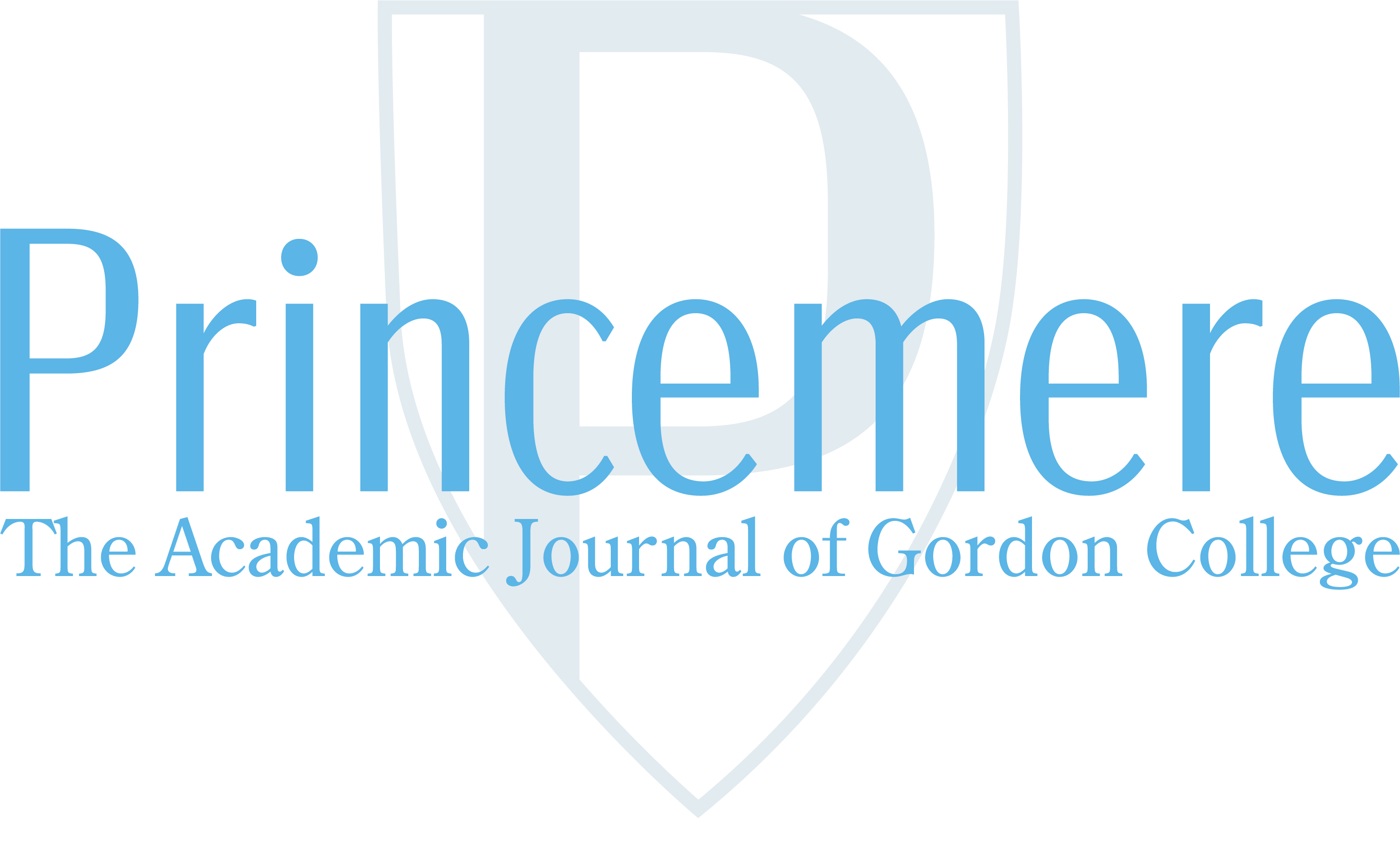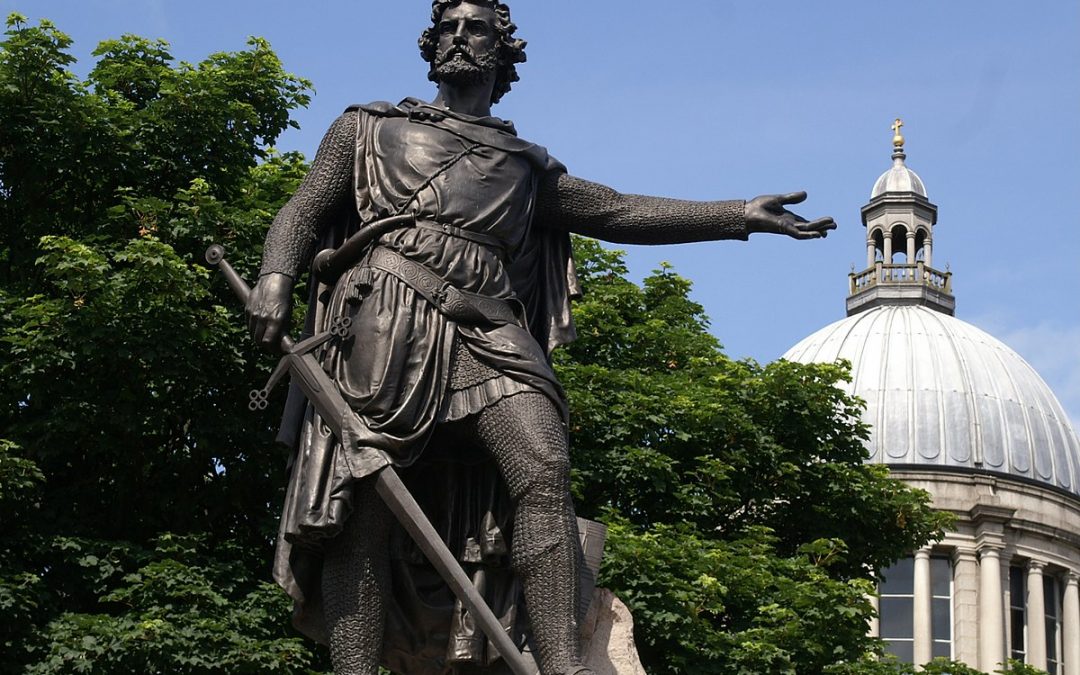In Scottish history there are few characters that stand out in national memory more than William Wallace (1270-1305). He was a Scottish leader in their Wars of Independence who was eventually captured and killed by the English. In subsequent years the life of William Wallace turned into a myth, much thanks to the epic poem biography written in 1477 by Blind Henry (1440-1492) – The Wallace. Scottish history, Scottish national identity and the epic poem are intertwined, each one impacting the other.
Blind Harry lived during a period of Scottish history that was marked by instability and unhappiness. Whatever hopes Wallace had for his nation, the 170 years following his death did not live up to them. From what is historically certain of Wallace, he was born into a family of lesser nobility and did not come onto the big stage until 1297 when he attacked the town of Lanark. From there he grew in prominence in the Scottish independence movement. Later that year, he defeated the English at the Battle of Stirling Bridge. However, he was eventually captured and hung, drawn and quartered in 1305. Eventually the Scottish kicked out the English and reestablished the independent Scottish monarchy under Robert the Bruce (1274-1329).
Following Robert the Bruce, Scotland saw a variety of kings, mostly bad. The new houses of Bruce and Stuart were largely ineffective. David (1324-1371), the only other king in the House of Bruce, struggled to deal with the repercussions of Robert’s reign. James I-III, of the House of Stuart, all died in battle. The Wallace was written during the reign of James III (1451-1488). During the reign of James III, nationalism begin to rise in Scotland after the Great Schism [1] Scotland was at odds with England about which pope the two countries supported, so the schism forced Scotland to be more religiously independent from England. St. Andrew’s University was officially made in 1412 as a result.[2] In the 1470s, James III tried to make an alliance with the English. The plan was to marry his son to Edward IV’s daughter.[3] The Scottish people were not happy about the alliance with the traditional enemies of the Scottish and the prospects of paying for an expensive wedding. The proposed alliance never came to fruition.
It was during the reign of James III that Blind Harry wrote The Wallace. Blind Harry was well-respected in his time.[4]. He lived from approximately 1440-1493 during the reigns of James II-IV.3 He claims as his source the work of Blair, whose writings are lost today.[5] Harry also wrote with The Bruce (written in the 1370s) in mind as it is evident that some scenes were adapted from the earlier work.[6] Today, the most common version of the poem was translated by William Hamilton (1665-1751) who took some liberty in editing down the poem to only include stories he found important to the plot.[7] It is important to note that many modern historians view The Wallace more as a work of fiction rather than historical truth. However, throughout history people viewed the poem as generally trustworthy.[8] Realistically, as modern readers examining an epic poem about a man for which we have very little contemporary source information, it is hard to know how to view The Wallace. The tension between those closest to the text believing it was historically accurate and the knowledge that some parts of the text are certainly wrong needs to be worked through. We can definitely say that it is a literary piece containing historical events, but to try to nail down specifics would be a mistake. It would take away from our ability to understand the impact that the piece made on the legend of William Wallace and the legend’s impact.
Reading the poem, it is directed towards the Scottish people. Blind Harry opens up the poem with “Of our ancestors, brace true ancient Scots.”[9] To contrast, he refers to the English almost exclusively as the “South’ron.”[10] The enemy’s identity is almost completely stripped away and boiled down to that geographical moniker. Comparing the two descriptions, it is evident which side in the war he supports. In attempting to conquer Scotland, the English were denying the Scottish national identity. In return, Blind Harry was denying their national identity.
The 170 years leading up to Blind Harry penning the poem offer crucial insight to the motivations and reasoning behind the poem. Harry is not bashful about his bias. In the poem, the English act as the ultimate enemy. They are portrayed as deceivers and conmen. He relays a story where they lure some Scottish nobles to a barn at Ayr and hanged them.[11] Their list of crimes do not only include that of the general war activities, but also of religious attacks. They did not only rape the “maids, wives, and widows” but also the nuns[12]. Harry mentions, after listing the English’s many atrocities, that the pope could not with “his threat’nings scare” the English into being moral.[13] He sets the English up as the moral inferior of the Scottish.
The historical context makes sense of the biases and choices of Harry. In Harry’s contemporary context, King James III was trying to create an alliance with the English in the 1470s. Harry most likely wrote the poem to speak to the king’s decision. The alliance would marry Edward’s IV daughter to James’ III son. It went against everything in the relationship between the two countries. Harry was recalling every horrible thing that the English did to them during the Scottish Wars for Independence.
Going back further, he is also probably looking to recall Scotland’s glory days. A century and half of incompetent kings, when any good ones were left picking up after the bad ones, will wear a country down. James I, II and III all died in battle.[14] The morale of the Scottish people was probably low. The Wallace encourages Scots to remember the days where their future had multiple possibilities.
William Wallace serves as a combination of underdog, victor and martyr.
Probably most importantly, Wallace can serve as a manifestation of Scottish nationalism and identity. The cause of Scottish nationalism and emphasis on the clan perfectly combined in Wallace after his wife is brutally murdered by an Englishman. He says that grief is “’vain’” and swears to take action, instead swearing that “’this sword I’ll never sheath. Till I revenge my dearest.’”[15] Blind Harry probably also wants to make the (Scottish) readers feel better morally than the English. If the English are to be wicked and the Scottish to be righteous, then Wallace is a prime example of religious righteousness. Throughout, Harry shows Wallace’s religious devotion in the “number of times in the poem when he attends mass, offers up prayers.”[16] At the end in captivity, Harry mentions that Wallace always had a “psalter book” that he had “from his childhood” that he requested before his execution and called Wallace “religiously unto his very last.”[17] Again, and again the characteristics that Wallace wishes to bestow upon Scotland, he bestows upon Wallace.
Harry makes it clear that the Scottish are underdogs in their fight against the English. Wallace, though always victorious, clearly fights an uphill battle. He is always about to be captured and usually does not have enough of an army to sit comfortably in one spot for a long time. Even his downfall happens because he was betrayed – not something of his own doing. Monteith promised him safe passage only to turn and take him to the English. Monteith even swore an oath to keep Wallace safe, which he broke.[18] Once again, the impetus of downfall is on the English, and their agents, not Wallace’s own shortcomings. Therefore, Wallace is set up to be the perfect martyr. He is unfairly accused and then killed. Despite Harry not spending a lot of time on Wallace’s death, it still serves as a fitting conclusion for the people to claim as a manifestation of Scottishness.
In the future, when Scottish nationalism resurged, Wallace was often held up as a Scottish hero and Harry’s version of Wallace has had a long-lasting impact on the what version was held up. For a long time, the second most owned book in Scotland (after the Bible) was Blind Harry’s The Wallace[19]. Harry’s version of Wallace was in many households for many years, helping to craft and guide the William Wallace mythos which is prolific through Scotland. If you google “Scottish Nationalism” and look at the Wikipedia page, there are two pictures, one of the Scottish flag and one of Wallace[20]. Sculptures of Wallace can be found across Scotland and historical sights are dedicated to him. In Scotland, there are at least 83 places that are named after him.[21] Wallace has made a mark on the Scottish landscape that is evident without knowing any history.
It is important to note that The Wallace’s impact was not limited to the political and civic realm. As one of the most important pieces of Scottish Middle Age literature the impact of the story can be seen in future literature. The poem was the first Scottish poem to use decasyllabic couplet, where poets such as Robert Henryson (1425-1500), William Dunbar (1459-1520), and Gavin Douglas (1474-1522) followed this example later on.[22] The Wallace’s character of William Wallace was an inspiration to writers like Robert Burns (1759-1796), Allan Ramsay (1686-1758), and Walter Scott (1771-1832).[23] As the Scottish identity began to shift towards the Highland heritage in the nation, Wallace was able to fit in as a hero Highlander. Robert Burns wrote a poem, “Scots, Wha Hae Wi’ Wallace Bled,” which was the unofficial anthem of the country until supplanted by more recent songs. In the lines, one can see a similar spirit to that of Blind Harry.
It is a spirit of fierce patriotism and love of Scotland, standing in contrast to disdain towards the English oppressors. It was these men who helped to shape the rising nationalism in the nineteenth century and then twentieth century.
Filling in those years shows an even clearer picture of Wallace’s impact, even if his popularity has waxed and waned. Scotland saw waves of Scottish nationalism throughout the years with Wallace being brought up again and again. When Scottish nationalism resurged during the 19th century, William Wallace become widely popular again “with poems, songs, and busts to honor his memory.”[24] During this Scottish movement, a tribute to honor Wallace was proposed and eventually built. Wallace worked well for both the “nationalists and unionists” during the time period.[25] Nationalists claimed him as someone as fighting for Scottish independence. On the other hand, Unionists argued that Wallace showed a “blending of Scotland within the British experience.” With so few concrete details being known about Wallace, the poem The Wallace plays an important part in shaping the narrative around him.
In the past twenty years the impact of The Wallace can still be felt in the widely popular film, “Braveheart”. The film draws from The Wallace and the writer is quoted having said “’Blind Harry gave me new material and insight.’”[26] Throughout, the film draws on Blind Harry’s characterization of Wallace and Harry’s interpretation of events. The film certainly continues the thread of Wallace as a brutal avenger of Scotland and his often-violent response to injustices against Scotland. And as a result of Braveheart, Scotland saw a spike in tourism. As the manager of the aforementioned Wallace’s monument said that they “’all owe Mel Gibson our wages.’”[27] Since the film’s release, tourism officials believe it has been the cause of at least “one million visits to the Wallace Monument and the wider Stirling area.”[28] One film has been responsible for the choices of thousands of people. Indirectly, a mere five hundred years later, The Wallace helped to spark a tourism boost in Scotland. The imprint that William Wallace had on Scottish culture and history cannot be understated. From his rise in 1297 to his martyrdom in 1305 to modern day, the interpretation of who Wallace was and what he stood for has been important to countless generations. These figures who serve as the national heroes for a country are almost always a combination of the man and the myth. The person of William Wallace is not different. Today, we might scoff at the literature of so many years ago, but its impact cannot be fully appreciated without reading Blind Harry’s The Wallace. Personally, William Wallace stands out as a man who put his kin first, before himself and who’s heart constantly cried out for Scottish “Freedom!”[29]

Sophia Jesson
Sophia is currently a sophomore art major and history minor. Even though she never imagined herself entering the art world, one high school art class changed that. When not working in Adobe, she enjoys working in pen. She also has a deep love of history and understanding the ideas that got us to the point where we are today. If she has a book or a sketchbook, then she is happy.

